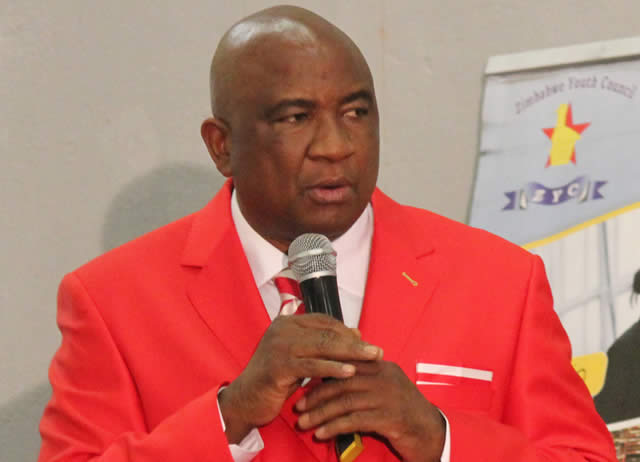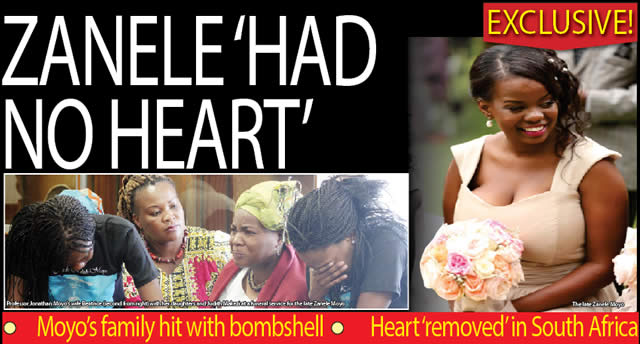The culture in dance
Opinion Saul Gwakuba Ndlovu
AN aspect of our lives that many leaders usually talk about at various public meetings but practically do very little about is our culture. Zimbabwe comprises almost 20 different cultural communities many of which are differentiated by their languages or dialects as is the case in the Shona groups and also between the Xhosa and the Ndebele.
One cultural aspect that identifies a community is its various dances. There was a time when Hwange Colliery Company used to hold a massive cultural occasion yearly when each tribal group, headed by its “umfumo” exhibited its traditional dance or dances.
The Bulawayo City Council also used to organise such an occasion at the Stanley Square, and a large number of various cultural communities would turn up to participate in song and dance.
At the height of his political popularity, the late Vice President Joshua Nkomo’s successive parties, especially the National Democratic Party (NDP) Zimbabwe African People’s Union (ZAPU) and the People’s Caretaker Council (PCC) organised more or less similar cultural occasions, a part of which was the consuming of traditional dishes and beverages prepared by each cultural group.
Today we seem not to show much pride in our cultural roots. I recently attended the official opening of the TG Silundika Community Cultural Centre (TGSCCC) at the Gala sector of Bulilima District’s Nata area and noticed that the local community did not have any traditional dancers or traditional song performers.
A couple of years ago, a cultural occasion was held at Luswingo, a stone’s throw away from Tokwana School in another part of the same area whose major cultural and historical background is Kalanga. At both events, cultural dances were most beautifully performed by Matjinge School pupils, a well-known young group of artistes that has represented Matabeleland South Province nationally.
Gala Primary School pupils presented an adaptation of an old Zulu classic composition, “Niyamazi uMnwana”, a four-pulse measure piece first sung and recorded by Hope Fountain Teacher Training Institution under the baton of Zero Chaba Kombani way back in 1956.
The unfortunate impression one gets at such occasions is that the local communities have nothing to offer in cultural terms. We should differentiate schoolchildren from communities in that in their daily lives, communities are guided by local traditions, culture and mores, while schoolchildren strictly follow their syllabuses.
Community leaders should show pride in keeping various cultural activities alive. It is very embarrassing to be a Tonga out there at Pashu without knowing a single Tonga traditional song, or to be a Kalanga out there at Kuwana (Nguwanyana) or Bhango, Hingwe, Madlambudzi, Kwiyani (St Joseph’s), Nopemano, Mhuke and Ntoli without knowing a single traditional tjiKalanga dance.
It is all well that we sing and dance to mbaqanga, house music and other music genres but those who regard the above music as being native to their own countries or regions do not sing in our languages or dance our hhoso, ndazula, peru and kwayara which are all Kalanga.
Taking the Kalanga community as an example, we can say it is possible to form small village-based cultural groups which can be visited and trained on how to perform one or more of the tribal traditional dances. At Hingwe, for instance, there must be someone who can still perform peru, a kind of dance in which Muriye Pamani Khupe was an expert.
At Masendu, it is possible to identify someone who can train others how to perform hhoso, a type of dance in which a man by the name Mabhange excelled. Mabhange’s counterpart at Tokwana was Bheleduna Khupe. At Bango, especially the Hhowuyawa area, there surely must be somebody left who can show young people how kwayara is performed. In 1960, children at Lugoti’s village (kaNlondo) were adept at that dance.
Nhopemano had the rain-dancer, Baka Mandiziba Bhoki Bhulu Khupe, whose village was a centre of convergence. It is very likely that there is somebody else who can teach some members how to perform that complicated specialist dance. It is important to remember that dances are not only a part of traditional performing art, but they are also a cultural means of communication.
Some Nguni dances communicate that community’s military skills. The Mwali (uNgwali) rain dance is a way of worship in which the whole body is involved, and is in the possession and control of supernatural powers during which it (the body) can roll, climb and wriggle far beyond its natural capabilities.
We should bear in mind that rain dancing is performed seasonally, starting in September and ending in November or early December. The most important part of that season is September when people converge and dance at their shrines in their respective regions.
It is, strictly speaking, traditionally improper to perform rain dances for political or merely social entertainment. They are a part of the traditional worshipping rites of the Kalanga people in which the Malaba house of Lubimbi plays the leading role.
Peru is for people who are at the height of their sexual virility. It is believed to have originated in the land of the Rotsi, Lozwi, Rozvi, Lozi of Lewanika (Luwananyika) and was introduced into the western region of the Mambo country through cultural and social contacts.
Some dances are meant to demonstrate the dancer’s pedal, bodily and even manual skills, that is to say, the dancers’ ability to make the relevant parts of his or her body perform as required. But other dances (hhoso, ndazula, kwayara) are for virtually any social occasion. The only difference is that some of them are performed by particular age groups. Ndazula, for example, is performed by elderly men.
Hhoso, what some isiNdebele speaking people refer to as amabhiza, is virtually for all age groups. The well-known Kalanga traditional dancer, Ntongwa Dube, performed that dance until his death, at well more than 70 years, at his home at Ramaquebana siding in Botswana.
He had led his wonderful troupe at the historic first Botswana independence anniversary in 1966. His magnificent performance was televised all over the world, from America to Vietnam.
People who live in regions neighbouring Botswana such as Dombodema Resettlement Area can certainly establish cultural exchange programmes with Ntongwa Dube’s descendants. Such programmes can include the training of some community-based groups in various types of Kalanga dances by some survivors of Ntongwa Dube’s troupe.
The importance of a community’s culture is fundamental to the community members’ self-esteem. Self-esteem is one of the human rights we derive from our national independence.
Dancing expresses that self-esteem.
Saul Gwakuba Ndlovu is a retired, Bulawayo-based journalist. He can be contacted on cell 0734 328 136 or through e-mail. [email protected]









Comments